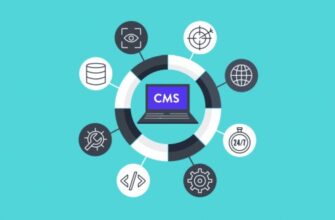- Whix vs Shopify
- Inventory management
- Coupons and discounts
- Types of products for sale
- Online payment connection
- Design templates
- Checkout and shopping cart
- Extensions and plugins
- Multilingualism
- What to choose for online marketing: Shopify or Wix?
- Integration with social networks
- Email Marketing
- SEO optimization
- Content Marketing
- Analytics and reporting
- Wix vs Shopify pricing
- Wix Pricing
- Shopify Rates
- Which platform is better: Shopify vs Wix?
- Advantages and disadvantages of Shopify
- Pros and cons of Wix
In today’s world, e-commerce is becoming more and more popular. That’s why choosing the right platform to build and manage an online store is a crucial decision for an entrepreneur or business owner.
There are many CMS on the market today, among which Wix and Shopify are especially popular and used most often. Based on this, users have a natural question – which is better Wix or Shopify?
Next, we will figure out which one is more convenient, compare their advantages and disadvantages, and also give recommendations on choosing the most appropriate content management system for an eCommerce project.
How many calls and sales will I get by ordering contextual advertising from you?
I need to calculate the conversion of my website Describe
the task
in the application
Calculate potential ad revenue Google
contextual advertising calculator
Whix vs Shopify
In order to understand which is better for eCommerce, Wix or Shopify, it is important to compare the key criteria – usability, design unification, connection of payment services, etc. By comparing these factors, you can understand which of the proposed CMS can best meet all the needs of your business.
Inventory management
The effectiveness of this process depends on the efficiency of order processing, control over inventory and minimization of costs. It is important to choose a CMS that provides reliable and convenient tools for accounting for stock balances.
Wix provides basic functionality that allows you to track product availability, current stock, and send notifications when stock is low. At the same time, this may not be enough for large projects, due to the limited functionality and lack of support for third-party logistics systems.
Shopify specializes specifically in e-commerce, so there are many more opportunities here. Here you can set up different options for goods, manage stocks in several warehouses, and synchronize balances with other logistics services.
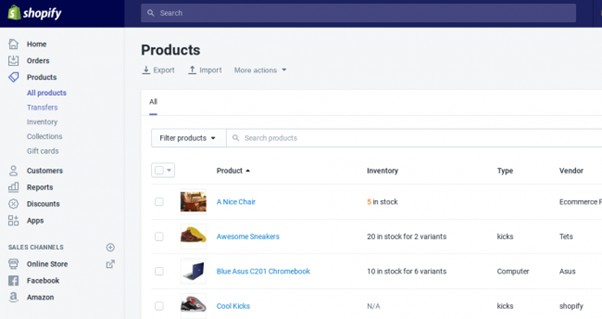
Coupons and discounts
On Wix, you can create discount coupons for a certain percentage of the order or a fixed amount. You can also set the minimum order amount from which the discount will be calculated and limit the number of uses for each coupon. You can also activate a promotion for certain positions or categories.
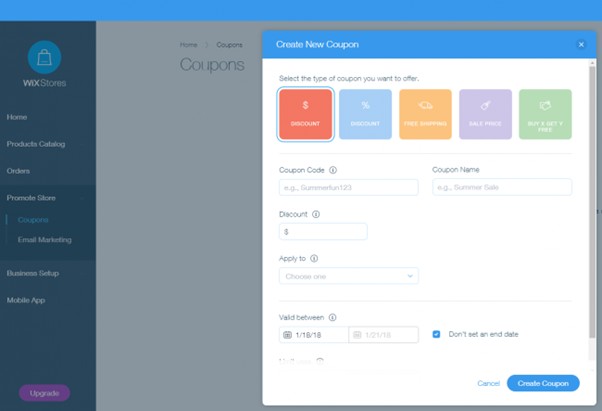
Shopify offers more options. You can create coupons for free shipping, discounts for buying a certain number of products or for a certain check amount. In addition, due to the supported plugins, you can significantly expand the range of discount and promotional offers.
Types of products for sale
In general, Wix is a versatile platform. You can use it to create an online store, but this is not its main specialization. The system is suitable for selling both physical and digital products (e-books, music or video).
Shopify, on the other hand, allows you to expand the basic product range by selling subscriptions or creating products with optional characteristics (choice of color, size, and other details that may change the price or delivery terms). It is also possible to install modules to adapt to any kind of products sold and business models.
Online payment connection

Wix does not have its own payment gateway, but it does support other payment providers (PayPal, Stripe, Square, etc.). Depending on the chosen tariff and the country where the project operates, the list of payment gateways and commission for use may vary.

Shopify has its own payment gateway. It allows you to accept credit and debit cards directly, without the need to connect other providers and leave the site to proceed to payment, which has a positive effect on conversion. In addition, the platform integrates with many alternative providers – PayPal, Stripe, Authorize.Net, 2Checkout, etc.
Design templates
On Wix, you can choose from over 800 designs, including some specially designed for online commerce. All themes are responsive, which ensures the correct display of the site on different devices.
One of the strengths is also an intuitive and powerful visual editor that allows you to position individual elements anywhere on the screen by dragging and dropping. You can also change the background, font and color scheme. However, once a theme is selected, it cannot be replaced without losing the changes made.
Shopify has a limited number of themes (about 70), but all of them are designed specifically for e-commerce, and are carefully and accurately drawn. Most templates are responsive and optimized for different types of devices.
The visual editor isn’t as flexible here, but it’s enough to customize the appearance of the resource. In addition, an important advantage is the replacement of the theme without data loss, which simplifies the process of updating the design.
Checkout and shopping cart
On Wix, the shopping cart is displayed as a pop-up window that allows customers to quickly view the selected products or change their quantity. The registration process includes several steps – entering the address and personal data, determining the method of delivery and payment.
Despite the fact that only basic configurations for the shopping cart and checkout are provided, this should be sufficient for most simple stores.
In Shopify, the form is also presented as a pop-up window, but there are many more settings and options. The checkout process is optimized for the convenience of the buyer, the checkout takes place within one page.
In addition, here you can connect special services to increase conversion. These can be ready-made solutions for calculating delivery prices from courier services, special calculators, etc.
Extensions and plugins
Wix has its own app store, the App Market, which features more than 300 extensions developed both by Wix programmers and unrelated developers.

All plugins are divided into categories: marketing, sales, social networks, etc. Despite the fact that here you will find a lot of plugins to expand the basic functionality, their number is still limited and cannot be compared with Shopify.
So, in the specialized section of the Shopify App Store, there are more than 6,000 plugins that allow you to add extensions for inventory, reviews, discounts, connect third-party services, and much more. This provides more flexibility to adapt the project to different types of business and requirements.
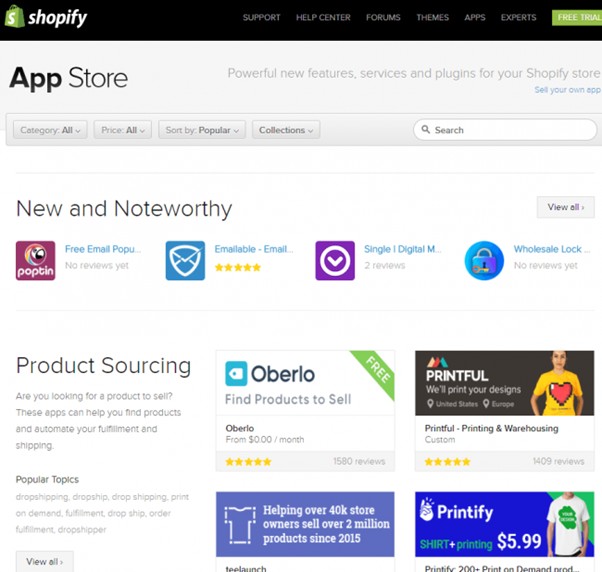
Multilingualism
Wix supports built-in multilingualism, so you can easily set up multiple language versions to display content. Using the Multilingual tool, you can translate template text elements, menus, set up different URLs and meta tags for each language.
In addition, automatic translation of texts for categories and product descriptions using Google Translate is available. Translations can also be edited manually. After activating the multilingual interface, a language switcher will appear in the header so that users can explore product offers in a language version they understand.
Resource on Shopify You can also translate into another language, however, for this you need to use additional modules – Langify, Weglot or Panda Language Translate (they can be installed in the App Store).
They integrate with the store and provide the ability to automatically or manually translate content. Depending on the selected module, the configuration and the number of supported languages may change. It is worth noting that you usually need to pay extra for this functionality.
What to choose for online marketing: Shopify or Wix?
Online marketing is a key element to the success of any online business, and choosing the right platform to manage and promote your online store can make a big difference.
Let’s look at the features of search engine optimization, e-mail marketing and integration with social networks for both CMS. Our goal is to provide information that will help you choose the best option based on your business needs.
Integration with social networks
In order to increase audience reach, strengthen brand reputation and attract new customers from social networks, Wix allows you to download Social Media Stream, Facebook Pixel, Instagram Feed utilities that allow you to easily integrate your online store with Facebook, Instagram, Twitter, Pinterest, etc. .
There are also built-in tools that allow you to add share buttons to the product page, as well as comments and social media widgets.
Shopify’s standard arsenal includes integration with Facebook and Instagram to enable sales directly through these platforms. In addition, here you can add a Share button and social media widgets. You can also install third-party developments in the App Store.
Thus, there is no clear leader in this criterion. Both options provide ample opportunities to work with all popular social networks both through internal tools and through plugins from the app store.
Email Marketing
E-commerce stores on Wix have an internal service for e-mail marketing called ShoutOut. It allows you to create, send and track newsletters through a simple and intuitive interface. In ShoutOut, you can choose email templates, connect your subscriber base, analytics, and set up automatic mailings.
At the same time, for more advanced mailing lists, you can connect the Mailchimp or GetResponse extensions, which can be downloaded from the App Market.
But Shopify does not have its own solution for e-mail marketing – you will have to use third-party plugins to organize the mailing. In the App Store, you can install applications to work with Mailchimp, Klaviyo, Omnisend, SendinBlue, and more.
These services provide the creation and customization of newsletters, e-mail marketing automation, data analysis, contact segmentation and much more. It is worth noting that most plugins from alternative developers are paid, which means they will raise the overall subscription fee for using the store.
SEO optimization
Wix administrators can set meta tags, set CNCs (human-readable URLs), create a sitemap, set up redirects, and integrate the site with Google Analytics. However, there are no more advanced SEO options such as structured data or canonical links.
Unlike Wicks, Shopify guarantees more flexibility for advanced SEO optimization. Here you can set up microdata, assign a canonical page as part of the basic functionality. SEO plugins from the App Store are also supported.
How many calls and sales will I get by ordering contextual advertising from you?
I need to calculate the conversion of my website Describe
the task
in the application
Calculate potential ad revenue Google
contextual advertising calculator
Content Marketing
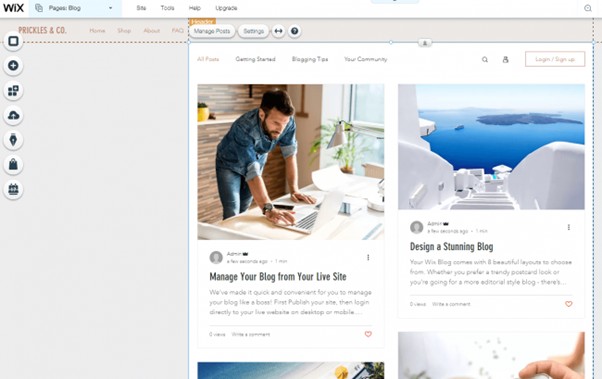
The built-in Wix Blog tool allows you to add and edit articles, media content, categories, and tags, as well as customize CNC and meta tags for each article. You can edit templates for displaying content, as well as integrate the blog with social networks and other services.
Shopify also has a built-in blogging section. Here you can add and edit articles, pictures and videos, categories and tags, configure CNC and meta tags for each informational article.
While Shopify Blog doesn’t have the wide range of themes that Wix has, you can change the design using the Theme Editor or choose the one you want from Theme Store.
Analytics and reporting
Internal Wix Analytics provides basic statistics on traffic, traffic sources, user behavior, and conversions.
In addition, you can connect Google Analytics to get more detailed statistics. Plugins for detailed analytics and reporting are also available in the App Market.
Shopify Analytics includes many more metrics. It provides detailed reports on sales, traffic, conversions, traffic sources, average check, repeat purchases and other key indicators.
You can also export reports in CSV format for detailed analysis. The App Store also provides the ability to integrate with Google Analytics and analytical systems from other developers.
Wix vs Shopify pricing
Price is one of the determining factors that online store owners consider when choosing a CMS. Next, we will compare Wix and Shopify in terms of subscription costs, estimate additional costs for plugins, as well as transaction fees and other possible costs.
Wix Pricing
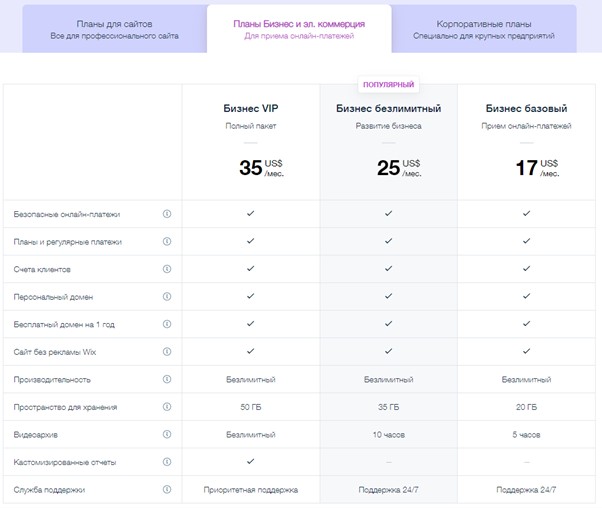
The service offers various pricing plans, which are divided into two categories: for regular sites and for eCommerce. E-commerce rates are slightly higher, but they provide more features – remarketing, dropshipping, marketplace integration, etc.
For online stores, the rates are as follows:
- Business Basic. Provides a basic set of configurations for the operation of an online store – online payment setup, 20 GB of storage space, an unlimited number of added products, domain binding and a free SSL certificate. Also included in this plan is the ability to upload up to 5 hours of video hosting and 24/7 support.
- Business Unlimited. Offers improved features compared to Business Basic – 35 gigabytes on hosting, 10 hours of uploaded video, additional eCommerce functions (automatic tax calculation, adding various currencies, connecting marketplaces and social networks, as well as analytics and reporting).
- Business VIP. The maximum set of features is provided here – 50 gigabytes of storage, unlimited video downloads, priority technical support.
It is important to note that prices may change over time, so before deciding on a suitable option, it is recommended to visit the official website for up-to-date prices.
Shopify Rates
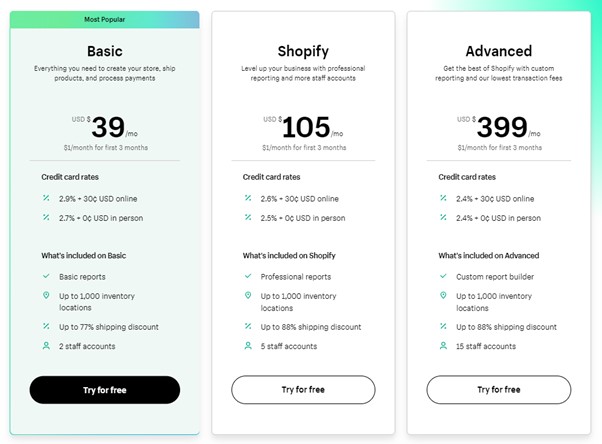
Shopify has three basic plans for online stores:
- Includes everything you need to run an online store: domain name binding, security certificate, unlimited product offerings, two employee accounts, discounts and gift cards, and integration with external services and applications. There is also a 2.9% transaction fee for accepting payments through third party providers.
- Provides more features than Basic – professional reporting, 5 accounts for employees, calculation of shipping costs based on information from the transport company and a transaction fee of 2.6%.
- Expect the most comprehensive feature set here, including 15 manager accounts, advanced analytics, integration with external ERP systems, and the lowest transaction fee of 2.4%.
In addition to the listed plans, Shopify has two subscription options – Lite and Plus. While Lite is sufficient for most small eCommerce projects, Plus is aimed at large companies and offers scalable solutions with custom pricing.
Which platform is better: Shopify vs Wix?
Both platforms are market leaders and are trusted by many users around the world. Next, we will figure out what to choose, Shopify or Wix, evaluating the advantages and disadvantages of each of them.
Advantages and disadvantages of Shopify
Pros | Cons |
Easy to use and set up | High cost |
Specialization in eCommerce | Transaction fees when using third party payment providers |
Large selection of design templates | It’s hard to edit a theme without knowledge of HTML |
Multilingualism and localization | Most apps require additional payment |
Large selection of plugins | It’s harder to create blog content |
Easy connection to payment systems | |
Powerful SEO tools |
Pros and cons of Wix
Benefits | Disadvantages |
Simple interface | No specialization in eCommerce |
Versatility | Fewer zoom options |
Large selection of templates | Less settings for SEO optimization |
Convenient visual editor | Not all plugins are available for free |
Availability of a free plan | Limited choice of modules |
Easy connection of third-party payment gateways | Download speeds are usually slower |
Cheaper in value |






